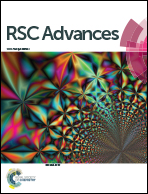Influence of silicate sol–gel host matrices and catalyst agents on the luminescent properties of Eu3+/Gd3+ under different excitation wavelengths
Abstract
Sol–gel silicate glasses co-doped with Gd3+ and Eu3+ ions were successfully obtained and the pronounced effect of the matrix composition on the energy transfer process from Gd3+ to Eu3+ was confirmed. Qualitative compositions of the examined matrices were varied while the europium and gadolinium ion concentrations were kept constant. Different chemical compositions of the sol–gel matrices were clearly marked by changes in the photoluminescent properties. The effect of gadolinium ions on the visible emission of europium ions has been studied. The characteristic emission bands corresponding to the 5D0 → 7FJ (J = 0–4) transitions of Eu3+ were registered. The emission of Eu3+ ions significantly increased during indirect excitation via the energy transfer process Gd3+ → Eu3+ (λexc = 273 nm) in comparison to direct excitation of Eu3+ ions (λexc = 393 nm). The beneficial influence of the energy transfer process on the 5D0 luminescence lifetimes of Eu3+ ions was definitely stated. The structure of the prepared silica sol–gel materials was examined using X-ray diffraction measurements (XRD) and FT-IR spectroscopic techniques. The formation of GdF3 and Gd2O3 nanocrystalline phases was confirmed.


 Please wait while we load your content...
Please wait while we load your content...